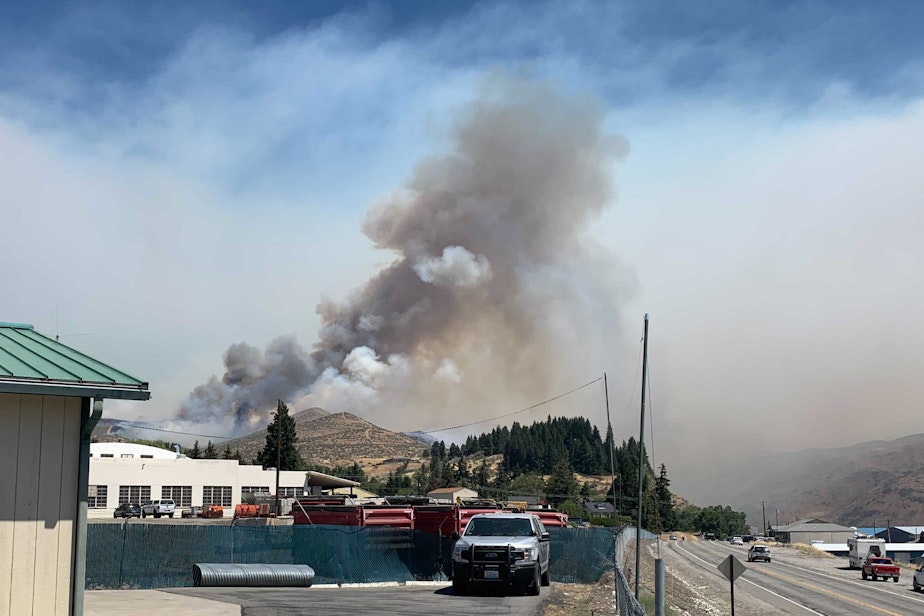Climate change supercharged the Northwest heat dome

Climate change supercharged the heat dome that battered western North America in 2021, according to a new study by Canadian researchers.
That summer’s extreme heat killed an estimated 1,200 people in Oregon, Washington, and British Columbia and did other long-lasting damage.
The heat dome lasted longer, covered a wider area, and got hotter due to humanity’s pollution of the global atmosphere, the researchers found.
“That event really was longer, larger, and more extreme due to climate change,” said Piyush Jain, the study’s lead author and a research scientist with the Canadian Forest Service in Alberta.
Without the planetary warming in the background, the 27-day-long heat dome would have ended 10 days sooner and spread over 25% less of the continent than it did, the researchers concluded in the journal Communications Earth & Environment. Human pollution boosted the heat dome’s overall strength — a measure of its magnitude, area, and duration — by 86%.
A heat dome is a nearly stationary block of high-pressure air that lets heat build up and prevents cooler air from moving in to replace it.
One indication of the 2021 heat dome’s vastness: While cities as far south as Palm Springs, California, hit all-time high temperatures, Jain and his family retreated to their basement to escape the 100-degree Fahrenheit (38-degree Celsius) heat in Edmonton, Alberta, 1,000 miles to the north.
“The basement tends to be about four or five [Celsius] degrees cooler than the main floor of the house,” Jain said. “So we just sort of camped out there for about a week, my wife and two kids.”
Many people, animals, and plants succumbed to the heat dome.
RELATED: Can Seattle take the heat? Officials say area is better prepared this summer
Across much of North America, trees that survived the scorching got dried out and more likely to catch fire, even later in the summer.
The new study says the heat dome was responsible for up to a third of forest fires in North America that summer.
“The heat dome was really a catalyst for the extreme fire activity and behavior that we saw in 2021,” Jain said.
Lytton, British Columbia, experienced higher temperatures than had ever been recorded in Canada — or in Texas, for that matter — 121 degrees Fahrenheit (49.6 degrees Celsius), before most of the town burned to the ground the next day.
To fight major conflagrations, fire agencies often borrow personnel and equipment from other regions. But the 2021 heat dome created tinderbox conditions over such wide areas that firefighters were in demand throughout the West all at once. Resource sharing was “severely constrained” and firefighting efforts were hindered, the researchers found.
RELATED: Extreme heat wave cooked acres of shellfish, spared others, study finds
“What stands out here is the method they used to quantify the changing climate effect on atmospheric blocking events [like heat domes] and fire activity,” Pacific Northwest National Laboratory atmospheric scientist Ziming Chen, who was not involved in the study, said in an email.
Chen said heat domes are not expected to form more frequently as Earth’s climate keeps warming, but they are expected to grow more intense. The Canadian study’s use of algorithms to peel apart pollution’s role in the 2021 heat dome could help scientists assess the threat of future heat waves as the earth’s climate moves into uncharted territory, according to Chen.
It is the latest study to conclude that the Northwest's off-the-charts heat wave was not just an act of nature. An international team of scientists found in 2022 that the Northwest's unprecedented heat dome was “virtually impossible” without human-caused climate change.
Other researchers say some Northwest forests suffered irreversible damage from the 2021 heat dome.
Oregon State University researcher Chris Still said the heat dome took a big toll on trees he studies in the Yacolt Burn State Forest near Skamania, Washington. The prolonged, intense heat baked and desiccated the forest, even at night.
“It was kind of like a blow dryer was pointed at the forest ecosystem, and it sucked a huge amount of water out of that forest,” Still said of the heat dome's hottest night. “This is extremely uncommon. It's very, very unusual to see water loss at night from a forest.”
Many seedlings died quickly, while some older trees, especially western hemlocks, suffered damages to their treetops that killed the entire tree months later, Still said.
Even trees that survived were often left more susceptible to future heat waves.
“Heat damage set[s] trees up badly for subsequent disturbances like droughts and more heat waves,” Still said.
Climate scientists say ending pollution from fossil fuels is the most important step to protect lives, infrastructure, and natural resources from increasingly intense heat waves. Other measures, such as protections for outdoor workers and air-conditioned refuges for vulnerable residents, can help communities minimize heat’s toll.
As of 2021, 53% of households in King, Pierce, and Snohomish counties had air-conditioning, according to the U.S. Census Bureau’s American Housing Survey. The 2021 survey, conducted every two years, marked the first time a majority of residents of the region, with its historically mild summers, reported having indoor cooling.
The majority of households with incomes under $100,000 still did not have air-conditioning.

